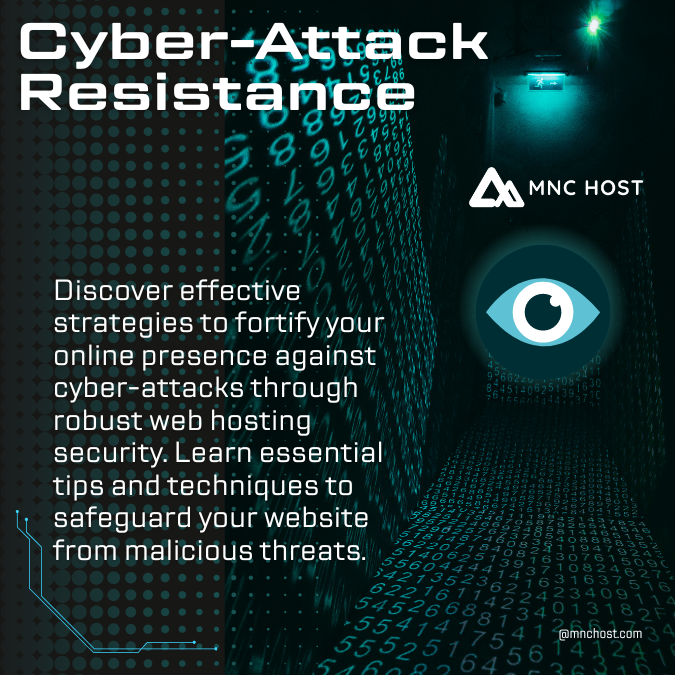
In the digital realm of nowadays’ where there isn’t any prominent difference between websites and businesses, keeping your web hosting safe is a maginal issue. Today, cyber threats are harder than were before which means data breaches may lead to the disastrous losses among people and companies. Between data leaks and DDoS attacks, the level of risk keeps elevating and may end in a situation that is disastrous. In this article, let’s explore web hosting world security, reveals known risks and provides practical information on how to protect your online business.
Understanding the Threat Landscape
Before getting to the defense technologies, we need to know the type and essence of the danger hidden in the digital pool.
1. Malware Infections: Adverse software in turn affects your web hosting environment and can compromise the credibility of your site, further infecting visitors in a similar manner.
2. Data Breaches: The unlicensed access of touchy data such as consumer information, financial documents, or intellectual property could have terrible repercussion on the trustworthiness and negative effect as well on your business.
3. DDoS Attacks: Flooding Distributed Denial of Service can bring about a large volume of traffic agents, the server hosting your website will not be able to serve genuine members.A specter is haunting Europe—the specter of populism.
4. SQL Injection: This type of assaults include exploiting malicious SQL code which is injected into input fields of the web applications, which in turn can lead to database corruption or data leakage.
5. Cross-Site Scripting (XSS): Hackers using weaknesses or loopholes in the internet apps to include evil or treacherous scripts in the web pages, thus disallowing other users to transact on the Internet securely.
Strengthening Your Defenses
Now that we’ve identified the common threats, let’s explore proactive measures to fortify your web hosting security:Now that we’ve identified the common threats, let’s explore proactive measures to fortify your web hosting security:
1. Choose a Reliable Hosting Provider: While opting for a good hosting provider that is known for putting security first is good enough, it is still wise to employ the necessary security measures you can control on your end. Ensure that you look for options such as frequent security patches, the use of a firewall, and DDoS protection..
2. Keep Software Updated: Assiduously take care of the web hosting software, sometimes it means updating the operating system, web server, and the applications or plugins. Software update may include patching of the known vulnerabilities that do not contribute to the successful exploitation of the software.
3. Implement Strong Authentication: Apply sturdy authentication procedures inclusive of the two-factor authentication or (MFA) to your web hosting to make it more secure. This aligns with the implementation of two-factor authentication that makes it difficult for a hacker to break into the account with a login credential.
4. Encrypt Data in Transit and at Rest: SSL/TLS Encryption technique to ensure secure data transmission from the website to the users’ browsers. On the other hand, encryption of the sensitive data (even stored on the server) is also very important to offer protection, in the case of break-ins.
5. Implement Web Application Firewalls (WAF): WAFs can do a great job when it comes to handling divergent traffic including unwanted cyber requests for example SQL injection and XSS.
6. Regular Backups: Develop a backup plan that consist of backup and restore process so that you will be able to restore your site within the shortest time in the event of security attack or data loss. Remind users to keep the backups of their operating system in an external storage, to avoid loss during a server compromise.
7. Monitor and Audit: Use and apply the logging and monitoring devices to know what is happening with your web hosting environment. Regular analyze logs for patterns of inappropriate activity and perform security audits to detect weakness and answer specific flaws.
8. Train Your Team: Instruct your teammates about security compliance standards like how to identify and deal with possible threat attacks like phishing activity or scamming on your website.
9. Limit Access Privileges: Try to reduce the number of office personnel who can access your web hosting. Let in only those individuals for whose jobs it is necessary, and have them on checkup periodically (every couple of months) in order to find out if that access to this data needs to be continued or ends (e.g. quitting the job).
10. Stay Informed: Bear in mind to follow the advanced web hosting security concepts and follow the cybersecurity trends. Register to security newsletters, read blogs from security industry, and take part in online forums and communities that share your interest to be up-to-date with events and proactive about securing your online presence.
Conclusion
In a world where there are cyber threats in every direction, before you even turn around, web hosting security will be a priority to all businesses, irrespective of their market size. After finding out all the threats that you have in common and give proper security, you could then sharply reduce the risks of becoming a victim of those attacks. Selecting a reliable hosting provider, updating software periodically and educating your team are all crucial steps taken in ensuring that your web host security is at peak and this is indeed a critical investment into maintaining the trust of your clients and the security of your valuable business assets on the world wide web. The situation requires our relentless watch, swift action, and robustness.